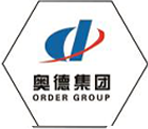
Nov . 24, 2024 21:07
Back to list
Understanding the Functionality and Applications of Pneumatic Valves in Industrial Systems
Understanding Pneumatic Valves A Key Component in Automation
Pneumatic valves are essential devices in various industrial applications, facilitating the control of air pressure and flow in pneumatic systems. These valves play a pivotal role in the automation of processes, contributing to efficiency and precision in operations spanning numerous sectors, including manufacturing, automotive, and food processing.
At its core, a pneumatic valve functions by regulating the airflow within a system, allowing for the actuation of pneumatic cylinders and other components
. They come in different types, including directional control valves, flow control valves, and pressure relief valves, each serving a unique purpose in the system's functionality.Directional Control Valves are perhaps the most common type, employed to control the direction of airflow. They determine the path that compressed air takes, ultimately steering the movement of actuators, such as cylinders or motors. These valves can be manually operated or automatically controlled through various methods, including electrical signals or pilot pressure. Common configurations include two-way, three-way, and four-way valves, each suitable for specific applications.
Flow Control Valves, on the other hand, are designed to manage the speed of actuators by regulating the flow rate of air entering or exiting the cylinder. This is crucial for applications requiring precise control of motion speed, ensuring smooth operation and minimizing wear on equipment. By using flow control valves, operators can achieve optimal performance in processes that demand varying speeds under different load conditions.
pneumatic valve

Another critical type, Pressure Relief Valves, protect pneumatic systems from over-pressurization, which can lead to component failure or safety hazards. These valves automatically vent excess pressure, maintaining system integrity and operational safety. Incorporating pressure relief valves into a pneumatic system is a best practice to ensure long-term reliability and prevent catastrophic failures.
Pneumatic valves are also characterized by their construction and materials. Most are made from robust materials such as aluminum, brass, or plastic, designed to withstand the pressures and conditions of industrial environments. The choice of material often depends on the specific application and environment in which the valve will operate, taking into consideration factors such as temperature, moisture, and potential exposure to corrosive substances.
In recent years, advancements in technology have led to the development of electronically controlled pneumatic valves, which offer enhanced precision and integration into automated systems. These smart valves can communicate with control systems and sensors, enabling real-time adjustments and monitoring. This integration not only optimizes performance but also contributes to predictive maintenance strategies, reducing downtime and operational costs.
In conclusion, pneumatic valves are vital components in the automation landscape, facilitating airflow control and enhancing system efficiency. With diverse types and applications, they cater to a wide range of industrial needs, underscoring their importance in modern manufacturing and other fields. Understanding their function and application is crucial for engineers and technicians alike to harness the full potential of pneumatic systems.
Latest news
-
Safety Valve Spring-Loaded Design Overpressure ProtectionNewsJul.25,2025
-
Precision Voltage Regulator AC5 Accuracy Grade PerformanceNewsJul.25,2025
-
Natural Gas Pressure Regulating Skid Industrial Pipeline ApplicationsNewsJul.25,2025
-
Natural Gas Filter Stainless Steel Mesh Element DesignNewsJul.25,2025
-
Gas Pressure Regulator Valve Direct-Acting Spring-Loaded DesignNewsJul.25,2025
-
Decompression Equipment Multi-Stage Heat Exchange System DesignNewsJul.25,2025

